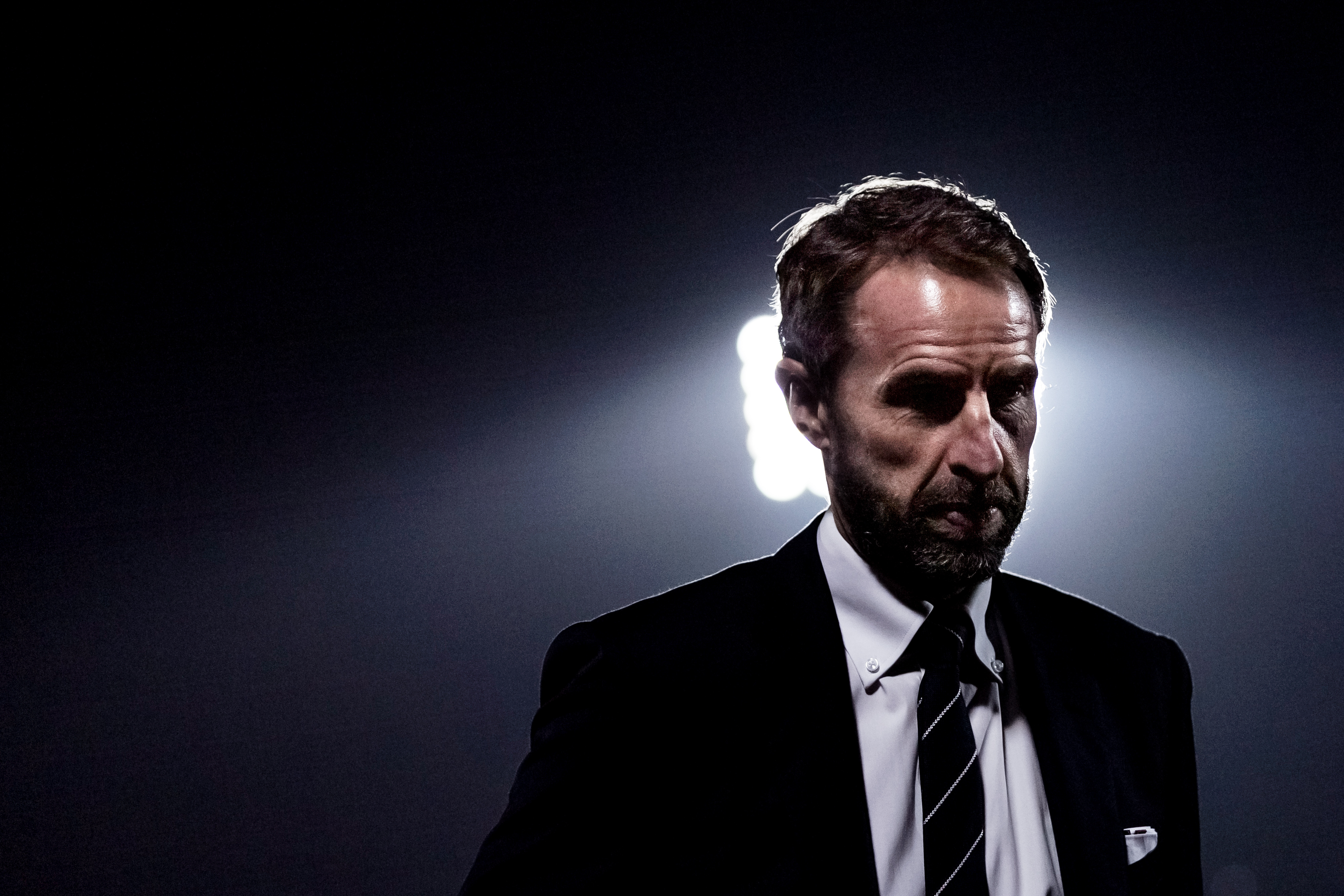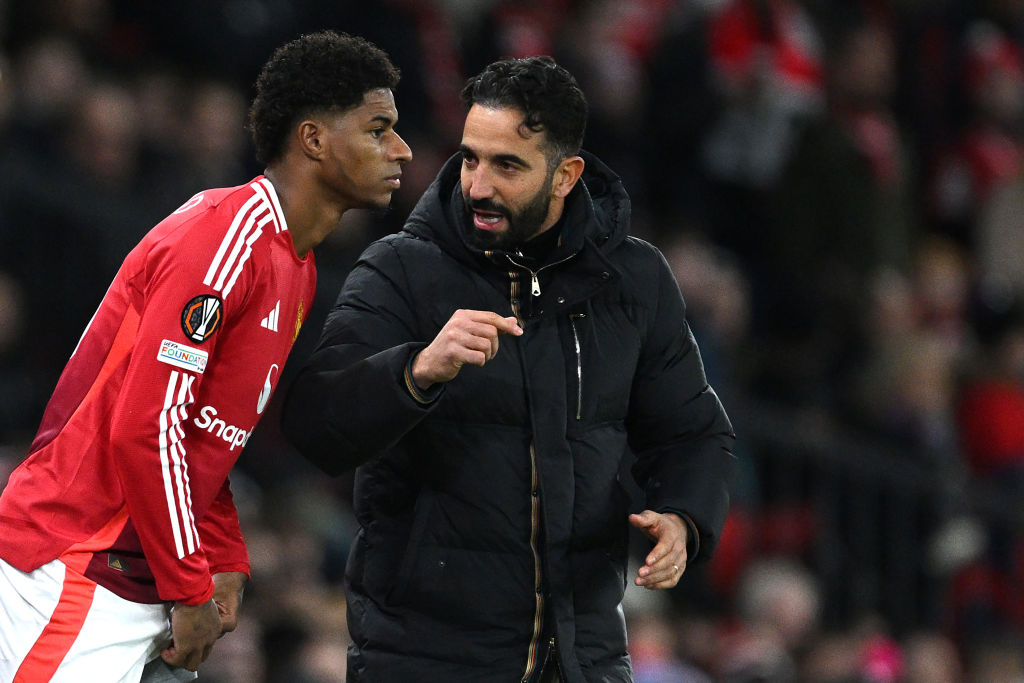Is it time for Southgate to ditch the tactical straight-jacket?
The England manager has had success with a conservative blueprint, but fans are calling for more adventure

Gareth Southgate is England’s most progressive ever manager. Off the field, anyway. On it, he ranks among the more conservative. Southgate is more roundhead than cavalier by nature. He has plotted progress and done it well, but it has stemmed from solidity.
He has created an environment where players can be themselves and express themselves. Off the field, in particular. A criticism of Southgate’s England is that they can be insufficiently attacking and unduly cautious. He took one of his country’s less gifted teams to the last four of a World Cup but as a younger generation of flair players has emerged, there has been pressure to develop something more adventurous and which accommodates more of them.
Yet his greatest achievement came when England donned the Southgate straitjacket. Defensive excellence took them to the brink of winning Euro 2020. They only conceded twice in seven matches: once from a free kick, once from a corner, never in open play. With better penalty taking, pragmatism would have paid off.
But England’s final selection was indicative. With Southgate favouring a back three, he only began with three genuinely attack-minded players: Harry Kane, Raheem Sterling and Mason Mount. When he plays 4-3-3 or 4-2-3-1, there is space for a fourth, often with Mount as the most attack-minded midfielder. Even then, that is aided by his famous excellence at pressing.
Saturday represented an attempt both to revisit the past and to shape the future. Southgate’s experiments, whether successful or unsuccessful, tend to have a point. Playing 3-5-2 against Switzerland placed Mount and Conor Gallagher in the roles Jesse Lingard and Dele Alli played in the 2018 World Cup, of the runners in the No. 8 positions who could make it a front four. If it showcased some of Gallagher’s strengths, it also illustrated a weakness in the system: that it could leave Jordan Henderson isolated, a lone holding player losing the midfield battle when his sidekicks sprinted forward. Switzerland’s first-half superiority was an echo of Croatia’s second-half dominance in the 2018 semi-final.
It was a reminder that England’s Euro 2020 was built on the platform provided by Declan Rice and Kalvin Phillips, the double bolt who locked the door in front of the defence. The double pivot can look a non-negotiable, whether in a 3-4-3, a 4-2-3-1 or a slightly lopsided 4-3-3. Southgate has trialled others in midfield – Jack Grealish, Phil Foden, Gallagher – but against pedigree opponents, England benefit from the security a partnership of defensive midfielders offers.
It obviously limits the number of more creative and potent players he can accommodate. With Harry Kane an automatic choice, it leaves three places – and only two if he fields a trio of central defenders – between Sterling, Mount, Foden, Gallagher, Grealish, Bukayo Saka, Emile Smith Rowe, Marcus Rashford and Jadon Sancho. There are not enough places in the squad to accommodate all, let alone outsiders such as Jarrod Bowen and Harvey Barnes. That Southgate had hoped to use Saka at wing-back in the March friendlies hinted at one way of making England more expansive.
Get FourFourTwo Newsletter
The best features, fun and footballing quizzes, straight to your inbox every week.
Others can come from the improvement of the current personnel. Rice has become more of an all-rounder this season, driving runs taking him into the final third more frequently. He has talked about trying to score more goals. Perhaps, by the time the World Cup begins, Jude Bellingham will have displaced Phillips, offering the prospect of a player who can provide the best of both worlds, starting deeper but able to offer more assists. Perhaps, though, that needs Bellingham to convince Southgate he can do the defensive half of the job.
But added incision would be welcome. Set-pieces propelled England to the 2018 semi-finals. Goals were scarce in Euro 2020, apart from in the rout of Ukraine. A low-scoring team with a host of talented attackers on the bench can have a puritanical look and yet the evidence of last summer and last week is that England are far harder to beat with two midfielders invariably behind the ball. Southgate’s research taught him that tournaments are usually won by teams who concede very few goals. His England have been prolific in qualifying campaigns but, against better opponents, often play with the handbrake on. It casts him more in the tradition of the reserved Alf Ramsey than the kamikaze Kevin Keegan, but a glimpse at the history of England managers could provide vindication. Their respective results would suggest that England are better careful than carefree.
For a limited time, you can get five copies of FourFourTwo for just £5! The offer ends on May 2, 2022.
Restock your kit bag with the best deals for footballers on Amazon right now
ALSO READ
SCREAMERS The 10 greatest England goals of all-time
RANKED Every England Nike shirt ever
THREE LIONS 10 uncapped players who could be in Southgate's plans for Qatar
Richard Jolly also writes for the National, the Guardian, the Observer, the Straits Times, the Independent, Sporting Life, Football 365 and the Blizzard. He has written for the FourFourTwo website since 2018 and for the magazine in the 1990s and the 2020s, but not in between. He has covered 1500+ games and remembers a disturbing number of the 0-0 draws.

